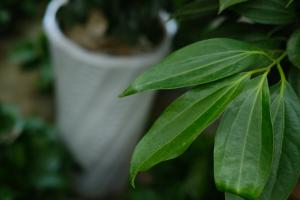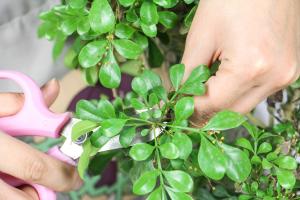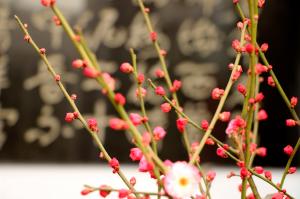A Kalanchoe Plant
Introduction
The Kalanchoe is a popular flowering plant amongst garden enthusiasts. It is known for its appealing blooms and low maintenance needs. The plant has small, durable leaves and a beautiful color scheme of flowers. In this article, we will discuss the various aspects of Kalanchoe and the care it requires.
Appearance
The Kalanchoe plant is a succulent plant that grows to a height of 6-12 inches. The plant has small, thick leaves that are green and fleshy. The leaves have a glossy texture and grow in a rosette pattern. The Kalanchoe plant produces petite tubular flowers that come in shades of pink, orange, yellow, and red. The flowers bloom in clusters, known as inflorescences, that develop at the end of the shoots.
Care
The Kalanchoe plant is an effortless plant to care for, making it ideal for novice gardeners. It thrives in well-draining soil and sunlight. The plant requires full sun or bright, indirect light to flourish. The Kalanchoe plant does not require frequent watering, and overwatering can be detrimental to the plant's health. Water the Kalanchoe plant every three weeks during the growing season and reduce watering during the dormant period.
Propagation
Kalanchoe plants are easy to propagate, making them ideal for gardeners looking to expand their plant collection. The best time to propagate this plant is during the spring or summer when the plant is actively growing. Propagation can be done by stem cuttings, leaf cuttings, or by separating offsets from the parent plant. Plant the cuttings in a well-draining soil mix and water sparingly to avoid overwatering.
Pests and Diseases
The Kalanchoe plant is relatively resistant to pests and diseases. One of the most common pests that affect this plant is mealybugs. Mealybugs are small, white, and furry pests that feed on the plant's sap, leaving behind a sticky residue. To control the infestation, spray the plant with neem oil or insecticidal soap. The Kalanchoe plant is prone to root rot, a fungal disease caused by overwatering. To avoid root rot, ensure that the soil is well-draining, and the plant is not watered too often.
Conclusion
The Kalanchoe plant is an excellent plant for any gardener, be it a beginner or experienced. It requires little care and provides a beautiful display of blooms. With the right care and maintenance, the Kalanchoe can bloom for several months, year after year.

 how many times do yo...
how many times do yo... how many planted tre...
how many planted tre... how many pine trees ...
how many pine trees ... how many pecan trees...
how many pecan trees... how many plants comp...
how many plants comp... how many plants can ...
how many plants can ... how many plants and ...
how many plants and ... how many pepper plan...
how many pepper plan...





























